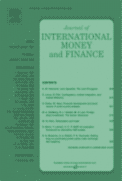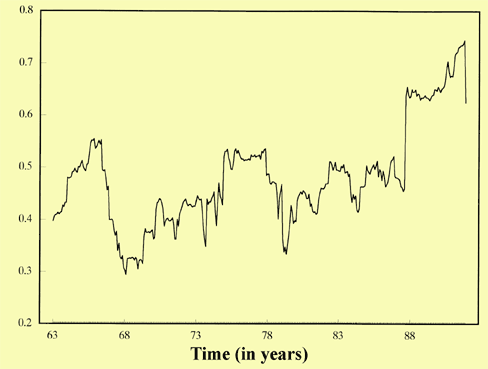

The correlation matrix of international asset returns plays a special role in the finance literature. International diversification of equity portfolios has been advocated on the basis of the low correlation between national stock markets. The covariance between national markets could change because the volatility of national markets evolves over time but also because the interdependence across markets changes. Looking at the market correlation allows one to focus on the interdependence between markets. The covariance / correlation matrix is one of the input for the computation of trading portfolio. Knowledge about its behavior, stability and predictability is then crucial. It is also of particular importance for testing international pricing theories as misspecification could lead to false conclusions. It is often stated that the progressive removal of impediments to international investment as well as the growing political, economic and financial integration affects international market linkages. This could lead to a progressive increase in the international correlation of financial markets reflecting the "global finance" phenomenon. Our objective is to test the hypothesis of a constant international conditional correlation, investigating various types of deviations. We explicitly model the conditional multivariate distribution of international asset returns and test for the existence of predictable time variation in conditional correlation for the period 1960-1990.

What can explain this instability of the unconditional correlation as illustrated in the figure above ? A first alternative is that the conditional correlation remains constant over time but the market expected returns and variances vary over time. A second alternative or, rather, additional explanation is that the interdependence of national equity markets is changing through time. The growing international integration could lead to a progressive increase in market correlation. Markets could be more highly correlated in periods of high volatility. The correlation could be higher when the markets go down, rather than up. The correlation could be higher in some periods of the business cycle (high level of interest rates and dividend yields). These are some of the arguments often heard in financial circles.
We find that the international covariance and correlation matrices are unstable over time. A multivariate GARCH modelling with constant conditional correlation helps capture some of the evolution in the conditional covariance structure. However tests of specific deviations also lead to a rejection of the hypothesis of a constant conditional correlation. An explicit modelling of the conditional correlation indicates an increase in the international correlation between markets over the past thirty years. We also find that the correlation rises in periods when the conditional volatility of markets is large. There is some preliminary evidence that economic variables such as the dividend yield and interest rates contain information about future volatility and correlation that is not contained in past returns alone.
 Extreme correlation in international equity markets
Extreme correlation in international equity markets
 The asymptotic distribution of extreme stock market returns
The asymptotic distribution of extreme stock market returns
 From VaR to stress testing : the extreme value approach
From VaR to stress testing : the extreme value approach
 Retour à la liste des publications
Retour à la liste des publications
 Conseil en gestion des risques
Conseil en gestion des risques
 Glossaire de termes financiers
Glossaire de termes financiers